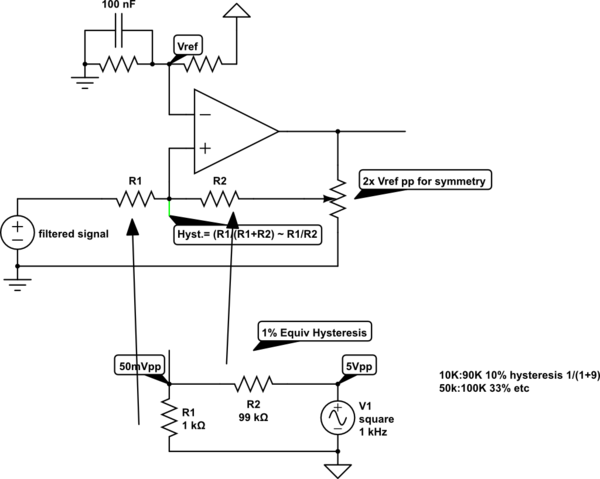I have designed a window comparator and am finding it seemingly impossible to add hysteresis. Below is the basic circuit before attempting to add hysteresis.

Now I add a feedback resistor to the positive input of both op amps in an attempt to add hysteresis and this is the result:

The hysteresis seems to only be applied to U2, where the reference voltage is on the positive input. When the reference voltage is on the negative input, as it is for U1, it doesn't do anything. Putting the feedback resistor for U1 on the negative input screws up the whole thing too. This is what is confusing me. Is there a way to do this? The reason I want to add hysteresis is because the LED flickers when you are near the reference voltages, since the input voltage is from an accelerometer and is very sensitive to change.

